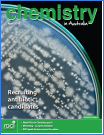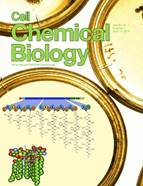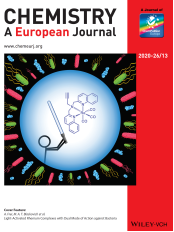Superdrugs vs Superbugs
Cultural statement
My group brings together a wide range of multicultural researchers with a variety of expertise and backgrounds, working together to develop solutions to antimicrobial resistance. It is supported by a core team of senior research officers and research assistants that provide guidance and training to enable the development of multidisciplinary skills.
The group regularly supports undergraduate research projects and Honours students, and hosts international visiting academics. A large network of national and international collaborators provides opportunities for exchange visits and establishing global scientific connections. HDR students present at national and international conferences, and regularly receive presentation awards and honours.

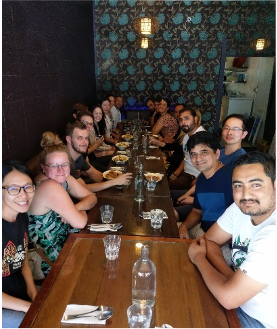
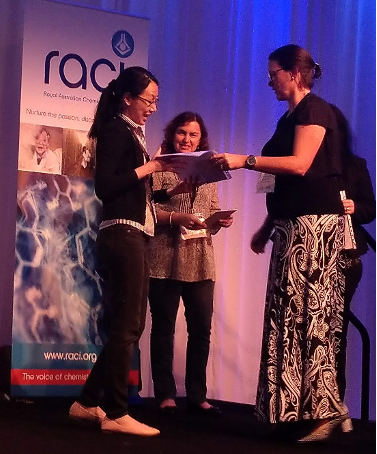



Key breakthroughs & discoveries
- discovery that cannabiboids such as CBD are a potential new class of antibiotics with activity against many Gram-positive bacteria including MRSA and a select subset of Gram-negative bacteria such as N. gonnorhoeae (pending Comm Biol paper)
- discovery that metal-containing complexes are a rich and unexplored source for new antibiotics (Chemical Science (2020) 11, 2627-2639 doi: 10.1039/C9SC06460)
- Discovery and development of a new 'supercharged' class of glycopeptide antibiotics effective against resistant Gram-positive bacteria (Nature Communications, (2018) 9, 22 and WO 2015/117196-A1 “Antibacterial Agents”
- WO/2019/084628 “Peptide Antibiotics”, Cooper, M.; Blaskovich, M.; Gallardo-Godoy, A., Hansford, K., Elliott, A. -new lipopeptide ‘last resort’ antibiotic for highly drug resistant Gram-negative bacteria
- WO/2018/102890 “Visualisation Constructs”, Blaskovich, M., Cooper, M.; Butler, M.; Stone, R.; Phetsang, W. – new probes to visualise bacteria
- WO/2018/102889 “Glycopeptide Antibiotic Constructs”, Blaskovich, M.; Cooper, M.; Ranzoni, A., Phetsang, W.; Hassan, M. P - functionalised antibiotics to develop new dignaostics
- WO 2015/117196-A1 “Antibacterial Agents” . Cooper, M., Blaskovich, M. – novel ‘supercharged’ glycopeptide antibiotic for Gram-positive bacteria
Our facilities & services
- Full synthetic and medicinal chemistry services
- A suite of microbiological assays, ranging from simple in vitro MIC assays through to mouse in vivo infection models.
- Screening for antimicrobial activity via the Community for Open Antimicrobial Drug Discovery (www.co-add.org)
Grants
Research funding is provided by a range of national and international agencies, including NHMRC (Project and Development grants), Australian Department of Industry, Innovation and Science (Global Connections and Innovation Connections grants), DMTC, the Wellcome Trust, GARDP and CARB-X. PhD funding is through UQ scholarships as well as joint university programs such as QUEX and UQIIDT.

Successful funding pitch to CARB-X with Dr Alysha Elliott, Boston USA Jan 2020

GARDP visiting CO-ADD labs
Research projects
Our new research projects are predominantly centered around a core platform of derivatised antibiotics, using medicinal chemistry design to attach a derivatisable handle at a position where antimicrobial activity is unaffected. This handle is then used for multiple purposes – to attach fluorophores (for fluorescent probes), other imaging moieties (e.g. PET, SPECT, MPI to detect bacterial infections in the clinic), other antibiotics (to create hybrid dual-acting therapeutics), adjuvants (to create antibiotics with enhanced activity), antibodies (to create antibody-drug conjugates), immune-stimulating agents (ARMS or PROTAC approaches) or magnetic nanoparticles (to create bacterial capture reagents for diagnostics).
Other research projects are beginning to exploit the wealth of information contained within the CO-ADD database, by identifying potential new chemical scaffolds with antimicrobial activity and conducting medicinal chemistry optimisation.
Finally, I retain a strong interest in the design and synthesis of novel amino acids and peptidomimetics, and their application to a range of potential therapeutic targets, particularly proteases and G-protein coupled receptors.
- antibiotic design and development
- non-antibiotic approaches to bacterial therapeutics
- assays and research tool to detect and study antimicrobial resistance
- amino acid and peptidomimetic design and synthesis
Publications
Dr Blaskovich is an Associate Editor of ACS Infectious Diseases
-
How to stimulate and facilitate early stage antibiotic discovery
Zuegg, Johannes, Hansford, Karl A., Elliott, Alysha G., Cooper, Matthew A. and Blaskovich, Mark A. T. (2020). How to stimulate and facilitate early stage antibiotic discovery. ACS Infectious Diseases, 6 (6), 1302-1304. doi: 10.1021/acsinfecdis.0c00163
-
Metal complexes as a promising source for new antibiotics
Frei, Angelo, Zuegg, Johannes, Elliott, Alysha G., Baker, Murray V., Braese, Stefan, Brown, Christopher, Chen, Feng, Dowson, Christopher Gerard, Dujardin, Gilles, Jung, Nicole, King, A. Paden, Mansour, Ahmed Moustafa, Massi, Massimiliano, Moat, John, Mohamed, Heba A., Renfrew, Anna, Rutledge, Peter, Sadler, Peter J., Todd, Matthew Houghton, Willans, Charlotte E., Wilson, Justin Jeff, Cooper, Matthew Allister and Blaskovich, Mark (2020). Metal complexes as a promising source for new antibiotics. Chemical Science, 11 (10), 2627-2639. doi: 10.1039/c9sc06460e
-
Fluoroquinolone-derived fluorescent probes for studies of bacterial penetration and efflux
Stone, M. Rhia L., Masi, Muriel, Phetsang, Wanida, Pagès, Jean-Marie, Cooper, Matthew A. and Blaskovich, Mark A. T. (2019). Fluoroquinolone-derived fluorescent probes for studies of bacterial penetration and efflux. MedChemComm, 10 (6), 901-906. doi: 10.1039/c9md00124g


